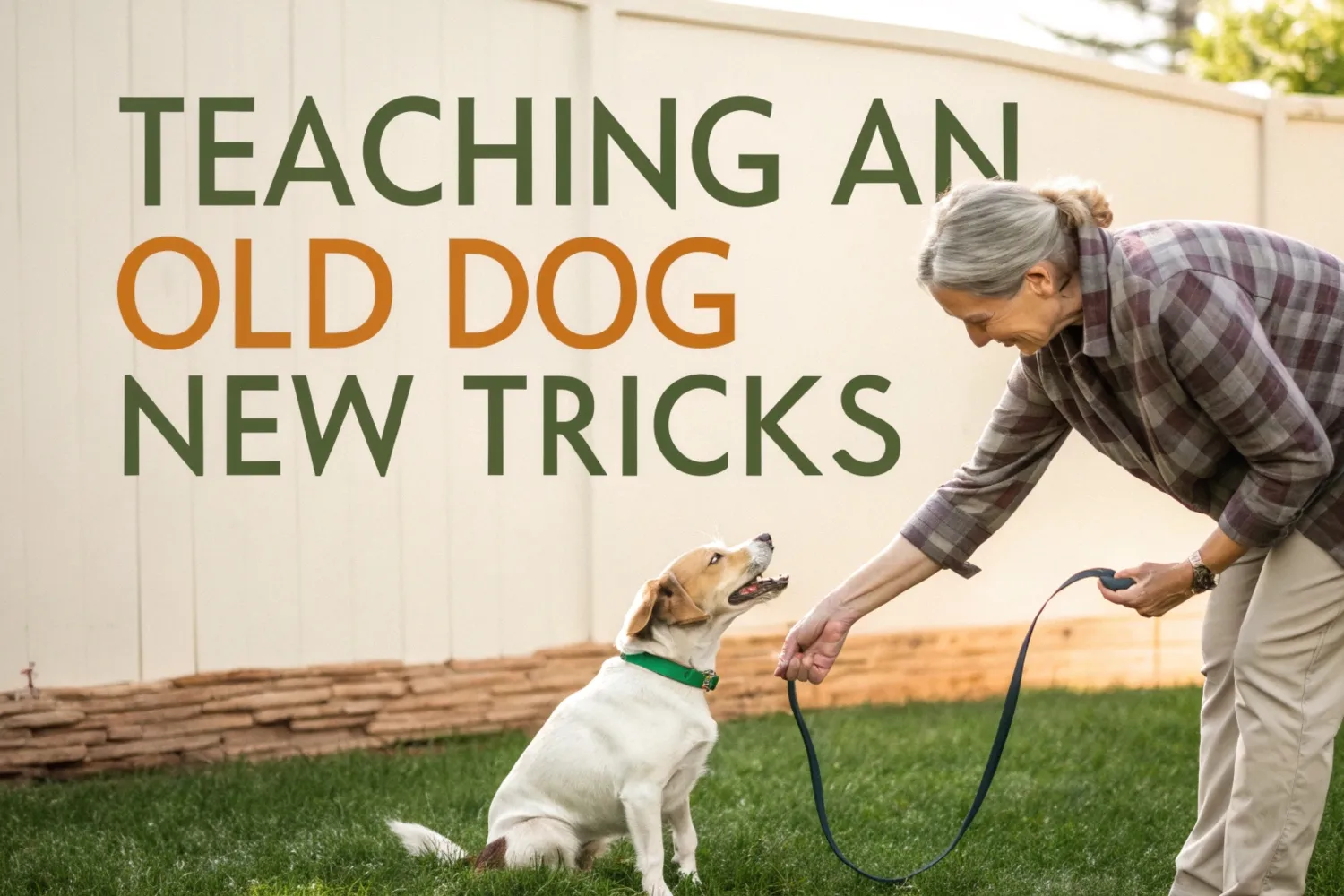Contrary to popular belief, yes, you can teach an old dog new tricks! Senior dogs can be just as eager to learn and please their owners as their younger counterparts. However, training a senior dog may require a different approach and a little extra patience. In this blog post, we will explore some tips and techniques for training senior dogs, ensuring that they continue to lead happy, healthy lives.
1. Recognize Your Senior Dog’s Limitations
As dogs age, they may experience physical and cognitive changes that can impact their ability to learn new behaviors. For example, arthritis or joint pain can make certain movements more difficult, while cognitive decline may affect memory and focus.
Before beginning any training program, consult with your veterinarian to discuss your dog’s overall health and any potential limitations. This will help you tailor your training approach to your dog’s specific needs.
2. Use Positive Reinforcement Methods
Positive reinforcement is the key to successful dog training at any age. This approach involves rewarding your dog for desired behaviors with treats, praise, or play.
Senior dogs may be more sensitive to punishment-based methods, so it’s essential to focus on Positive Reward Training for Dogs to keep them engaged and motivated. This approach, which involves rewarding your dog with treats, praise, or play, is highly effective in encouraging desired behaviors and strengthening the bond between you and your dog.
3. Keep Training Sessions Short and Manageable
Senior dogs may have a shorter attention span or tire more quickly than younger dogs. To accommodate this, break your training sessions into shorter, more manageable segments. Aim for 5-10 minute sessions, several times a day, rather than one long session. This will help keep your senior dog focused and engaged, while also preventing exhaustion. Be sure to end each session on a positive note, reinforcing your dog’s success and building their confidence.
4. Adjust Training Techniques for Your Dog’s Physical Needs
As mentioned earlier, senior dogs may have physical limitations that can impact their ability to perform certain behaviors. Be prepared to modify your training techniques to accommodate these limitations. For example, if your dog has arthritis, you may need to use a raised platform for “sit” and “down” commands to reduce strain on their joints. The American Veterinary Medical Association offers guidance on caring for senior pets and adapting their care to their physical abilities.
5. Be Patient and Consistent
Patience and consistency are essential when training any dog, but they are especially important when working with senior dogs. It may take longer for your senior dog to learn new behaviors or break old habits, so be prepared to invest time and effort into the training process. Remember that every dog is different, and progress may be slower for some than for others. Keep your expectations realistic and celebrate every small success along the way.
6. Build Trust With Your Senior Dog
Building a strong bond with your senior dog is crucial. Trust enhances communication and makes training more effective. Spend quality time together, engage in activities your dog enjoys, and provide consistent care to strengthen your relationship.
7. Respect Your Dog’s Physical and Mental Boundaries
As dogs age, they may face physical and mental challenges that make learning new behaviors more difficult. It’s important to recognize and respect these limitations. Avoid pushing your dog too hard, and adjust training methods to suit their abilities.
8. Keep Sessions Brief and Consistent
Short, consistent training sessions are more effective for senior dogs. This approach helps prevent fatigue and keeps your dog engaged. Consistency in training routines also aids in better retention of learned behaviors.
9. Focus on One Trick at a Time
Trying to teach multiple tricks simultaneously can be confusing for senior dogs. Focus on one behavior at a time, ensuring your dog masters it before moving on to the next. This method promotes better understanding and learning.
10. Use Treats to Encourage Desirable Behaviors
While treats are effective for reinforcing positive behaviors, avoid using them to distract your dog from negative behaviors, as they may misinterpret this as a reward. Instead, use treats to encourage and reinforce desired behaviors.
Offering Old Dog, New Tricks Services
Training a senior dog can be a rewarding and fulfilling experience for both you and your furry friend. By understanding their limitations, using positive reinforcement techniques, breaking sessions into short segments, modifying training techniques, and being patient and consistent, you can help your senior dog learn new behaviors and continue to thrive.
At K9 University, we offer boarding training, group training, and private sessions to help you and your senior dog navigate the training process. Our experienced trainers will collaborate with you to create a customized plan tailored to your dog’s specific needs. Contact us today to learn more about our senior dog training services and how we can help your older pup learn new tricks!



